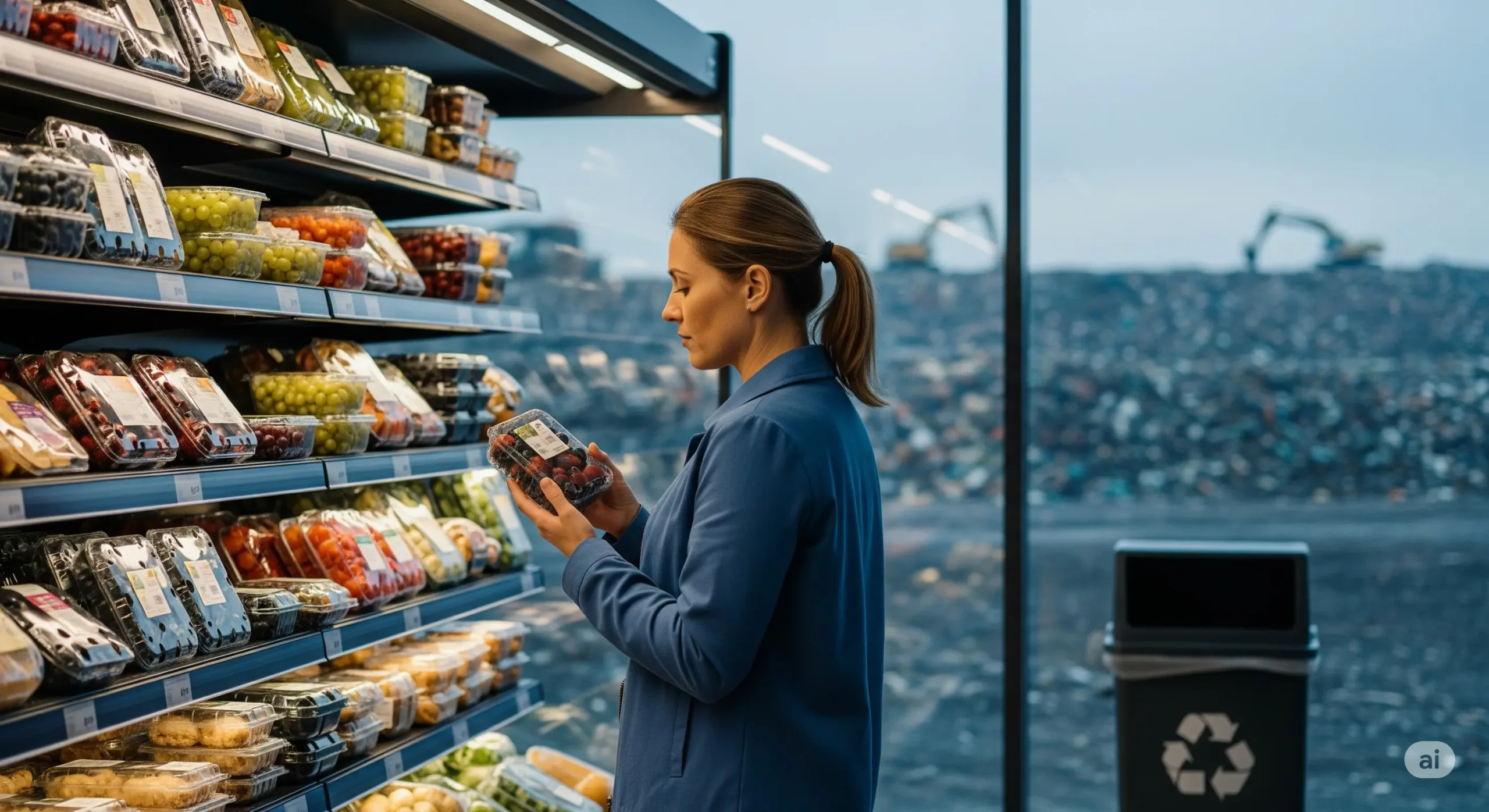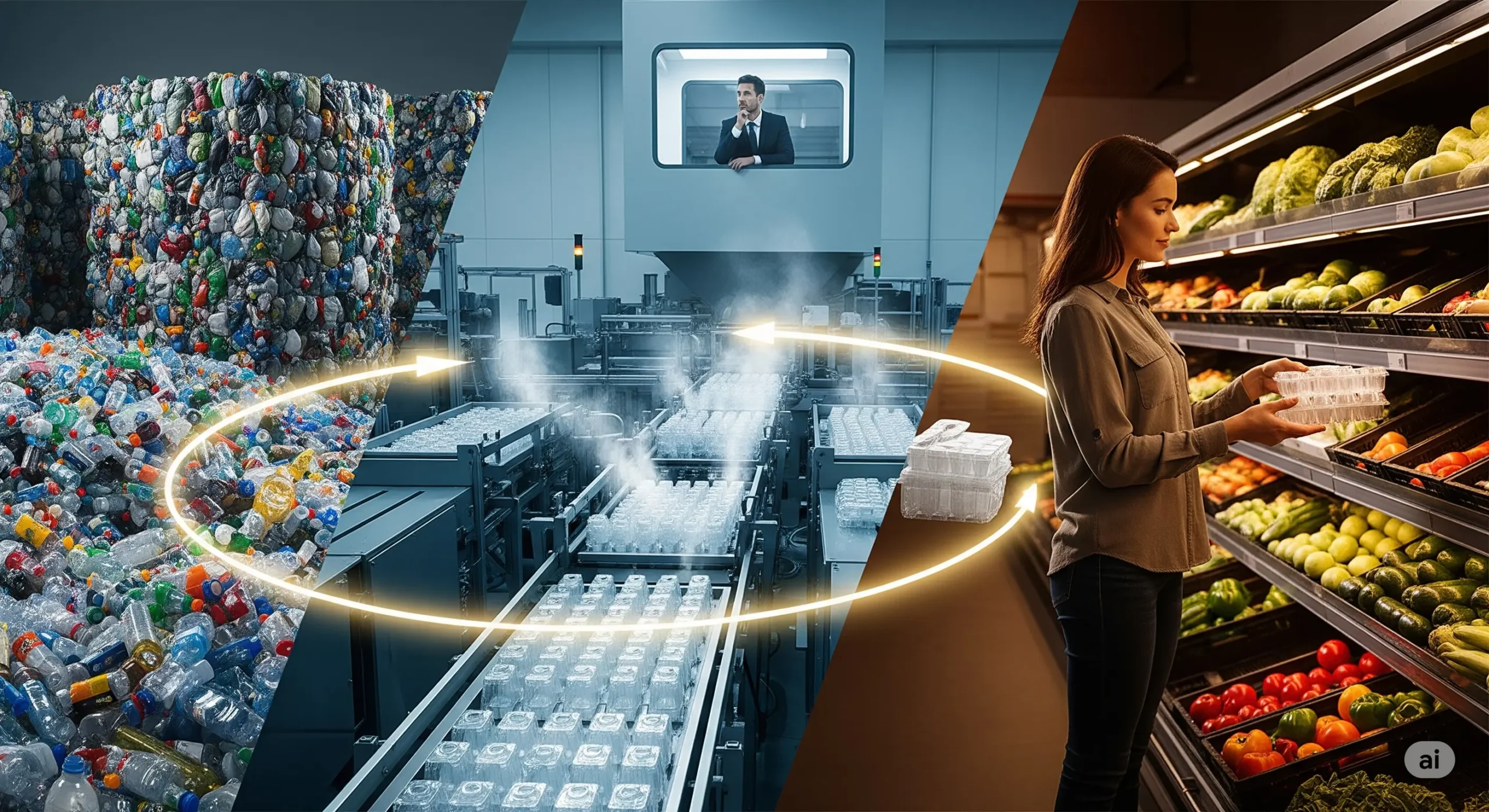
When Sustainability Meets the Real World
Walk through any supermarket, and you’ll find packaging that talks a big sustainability game—”100% recyclable,” “bio-based,” “compostable.” But the gap between intention and execution is becoming harder to ignore. A recyclable tray that isn’t collected is still waste. A compostable pouch that needs special conditions fails most users. Over 90% of compostable packaging globally ends up in landfills due to inadequate industrial composting access. Consumers are seeing through greenwash faster, and brands face rising pressure to prove their packaging performs—not just in lab tests or pitch decks, but on the ground. From shelf to bin, usability and system-fit are no longer afterthoughts. In markets like India, where humid monsoons, inconsistent waste collection, and vast regional variations shape recovery infrastructure, circular packaging demands more than good material choices. It needs resilient engineering, intuitive formats, and above all—trust. And trust doesn’t come from slogans. It comes from design that respects the user, the system, and the environment. That’s why forward-looking brands are turning to models like Circularity as a Service—a fully integrated packaging approach that includes everything from ethical sourcing and downgauging to end-of-life recovery, traceability, and compliance alignment. Circularity as a Service isn’t just about using recycled content—it’s about orchestrating packaging design, supply chain logistics, and recovery systems into a unified, performance-driven framework. In an era where greenwashing faces scrutiny and legislation is tightening, businesses that operationalize circularity as a service will be better equipped to deliver measurable impact at scale.
 Designing for the Systems Around Us
Designing for the Systems Around Us
This is where packaging is undergoing its most critical shift: from disposable objects to engineered systems that align with how recovery ecosystems actually function. Forward-looking manufacturers now design packaging not just to contain a product, but to perform within real-world supply chains, sorting infrastructure, and user behaviors. The goal isn’t just lighter materials—it’s smarter structures. Tamper-evident clamshells that lock securely but open easily. Vented punnets that prevent spoilage during long hauls. Label adhesives that won’t contaminate recycling streams in humid conditions. These subtle, engineered adjustments increase recovery odds exponentially in fragmented systems. Even minute technical choices—substrate configuration, closure mechanisms, in-line convertibility—can influence recyclability, cost-efficiency, and consumer experience. Unlike compostables that depend on perfect industrial conditions, smartly designed rPET performs well in decentralized environments. It can be collected, reprocessed, and re-used—without requiring sweeping infrastructure upgrades. Smart packaging makes recovery possible in more places, for more users, with fewer compromises. That’s how design stops being a cosmetic layer and starts functioning as system logic—working not just for the product but for the world it travels through. Packaging that thinks like infrastructure helps companies not only meet EPR targets, but reduce waste-related liabilities, shipping inefficiencies, and stock losses. And by building repeatable, modular formats suited to varied conditions, it also scales faster—across geographies, categories, and compliance zones.
 AVI Global Plast: Circularity That Performs
AVI Global Plast: Circularity That Performs
At AVI Global Plast, we’ve embraced this engineering-first mindset to help brands bridge the gap between ambition and impact. In FY23–24 alone, working with certified recycling partners, we helped redirect over 290 million PET bottles from waste streams—equivalent to saving more than 6,900 metric tons of gasoline—and replaced over 4,000 metric tons of virgin plastic through verified recycled content. Our Circularity as a Service model supports clients with everything from downgauged packaging formats to digital platforms like AVI Trace, enabling lifecycle transparency that satisfies consumer expectations and regulatory scrutiny. Unlike material-switch solutions that rely on perfect infrastructure, our model aligns packaging design, compliance, and recovery logistics into one cohesive, scalable process. Our solutions aren’t just manufactured—they’re operationalized. Whether it’s trays that endure tropical logistics or ESD-safe packs engineered for performance without excess plastic , AVI prioritizes usability, traceability, and regional system fit. Our teams collaborate across the value chain—from recyclers to producers to compliance bodies—to ensure every pack is recovery-ready and regulation-compliant. And as the demand for auditable circularity grows, we’re advancing the model with new traceability APIs, modular take-back programs, and localized recovery pilots. These systems don’t just help brands meet EPR—they help them lead it. Because the future of packaging won’t be judged by claims—it will be built on systems that deliver. If you’re ready to make circularity a real business advantage, connect with us to explore how we can partner for lasting change.

 Designing for the Systems Around Us
Designing for the Systems Around Us AVI Global Plast: Circularity That Performs
AVI Global Plast: Circularity That Performs